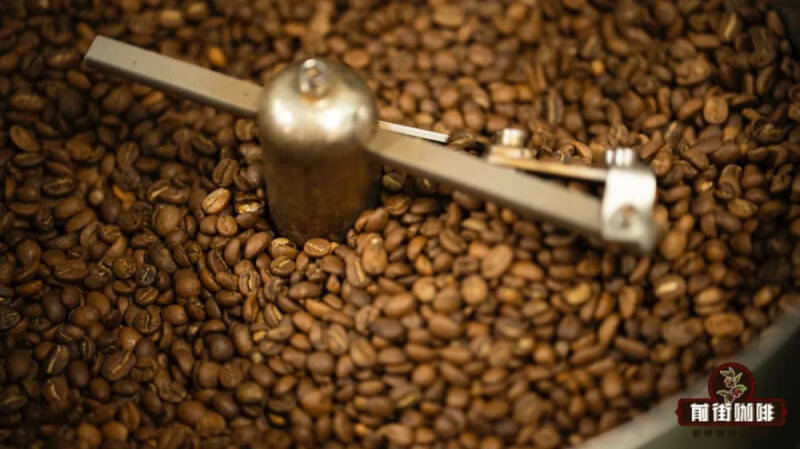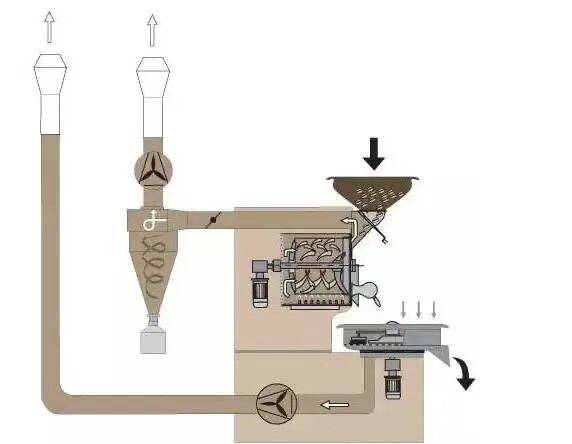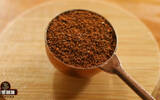What should I pay attention to when roasting coffee beans? What are the advantages and disadvantages of different baking machines? What are the technical terms used in cooking coffee?
Recently, more and more friends are consulting roasted coffee beans backstage in Qianjie. It must be that you are no longer satisfied with brewing a cup of coffee, so you have the idea of baking coffee beans!

This is a good thing! Because learning to bake allows you to understand coffee from another point of view, thus knowing more about coffee! But what we need to know is that roasting coffee beans is like stir-frying. It's easy to cook a dish, but it's not easy to make it taste good. therefore! Qianjie follow-up will share with you, how to "stir-fry" a pot of good beans! Before roasting coffee beans in practice, we need to know the utensils for roasting coffee beans and some professional terms for coffee roasting! Because this is some very important basic knowledge for roasting coffee beans!
The roasting equipment of coffee beans is reasonable, but the roasting equipment of coffee beans is not as complicated as we think. Just like what I said at the beginning of the front street, it's the same as cooking. The process of turning coffee beans from raw to ripe is only achieved through chemical reactions and physical changes produced by high temperature. Therefore, most of the cooking utensils commonly used in our lives, such as iron pots, microwave ovens and popcorn machines, can be used to bake coffee beans.
It's just! It is difficult for them to distribute the heat evenly among all the coffee beans, so it is easy to get caught or charred! Therefore, in order to make coffee beans evenly heated, a professional coffee bean roaster was born! (with the exception of hand net)
Direct roaster: direct roaster, as the name implies, is directly through the flame heat transfer to coffee beans! The boiler of the direct-fire bean dryer will have a certain number of holes through which the flame can come into direct contact with the coffee beans. In the case of proper roasting, coffee beans can have a very good flavor performance, more fragrant aroma. The disadvantage is also obvious, because the flame will be in direct contact with the bean watch, so it is difficult to control! Scorch and entrainment are common accidents in direct-fire roasters, so it tests the baker's proficiency.

Semi-direct-fire roaster: semi-direct-fire roaster is also known as semi-hot air roaster. The biggest difference between semi-direct-fire roaster and direct-fire roaster is that there is no hole in the boiler, the flame can not directly touch the bean table, and the situation of coke burning is greatly reduced. The heat transfer of the semi-direct roaster is mainly through a diversion hole on the inside of the drum, which can transfer heat energy into the drum. At the same time, the continuously heated metal drum will also provide heat energy, which can make the baking more stable and the beans heated more evenly. Therefore, at present, most bakers use semi-direct fire roasters.
Hot air roaster: hot air roaster uses air with heat to blow coffee beans! The specific principle is to draw air through a blower, and then let the air add heat through a hot line, so that it can be used as a heating source to bake coffee beans. The advantage of this roaster is that it can better control the color of coffee beans, and the heating efficiency is fast, so that coffee beans can be heated more evenly. So it has become the best choice for many baking studios to customize curves.
The technical terms that will appear when baking then let Qianjie introduce you to some common terms in coffee roasting! It's a technical term. These terms correspond to the different nodes and stages that will appear in the roasting process of coffee beans, and each node will bring different changes to the coffee beans. Therefore, before learning to roast coffee beans, the understanding of these terms is very important! It can be eaten with the baking curve.
Bean entry point: this bean entry point refers to the time to put raw coffee beans into the roaster, just like baking a cake, you need to preheat the oven to a certain temperature before you can put it into the cake paste to bake, and coffee beans are the same! And different bean dryers, different baking amount, and different bean density, moisture content, will have different bean entry points! And this entry point is also the beginning of baking graph measurement. Temperature recovery point: when we put the coffee beans into the roaster, the coffee beans will absorb the heat from the furnace, which will greatly lower the temperature. And when it falls to a certain point, the temperature in the furnace will begin to rise again! This inflection point, we call it: the temperature recovery point. Yellowing point: when the raw coffee beans are roasted to a certain extent in the oven, the color will begin to turn yellow (mostly turquoise and light yellow at first), and the bean surface will appear wrinkled. And this stage is known as the turning yellow point. The first burst: when the coffee bean absorbs a certain amount of heat, the bean can no longer suppress the energy trapped in the body, so it will release the energy through the explosion. Beans will make a crisp sound when they are fried: "bang"! This is the first burst of coffee beans, commonly known as an explosion. After the explosion begins, it means that the coffee beans have been roasted, so we can stop baking at any point in time and let the beans out of the oven. The node that determines the beginning of an explosion is determined by the three clear sounds we hear in the process of baking. Second burst: if you are not ready to come out of the oven after the first explosion, the coffee beans will ring again within two minutes after the sound of the coffee beans dies down. And at this time, it is the second burst of coffee beans, commonly known as the second explosion. Similarly, the second explosion is judged by the sudden sporadic sound! The difference is that the sound of the second explosion will be more dull and less crisp.
Between these nodes, there are some special time names! Dehydration period: since the coffee bean enters the roaster, it will be continuously dehydrated, which is a thing that runs through the whole process. However, there is a stage when the dewatering rate of beans is the highest, that is, from the entry point to the yellow point. Therefore, this process is called "dehydration period".
Relay period: the beginning of the yellowing point means that the coffee beans begin to enter the Maillard reaction, during which the coffee beans deepen their color, emit an aroma similar to that of toast, and are ready to release the energy they save. Therefore, the period from the yellow point to the explosion is called the relay period. Development period: as mentioned above, the beginning of the explosion means that the coffee beans are already "ripe" in the physical sense, so we can determine the remaining time the beans are roasted in the oven. And this period of time is the development period, the more and less development time determines the flavor trend of beans, you want beans deeper, not so sour, then the development period is longer; if you want beans sour, then the development time is shorter! But what we should know is that there are countless beans in the furnace, and the ripening time of these beans is all different. if we develop for too short a time, it is easy to let some beans be baked when they are not ripe, and then there is a phenomenon of lack of flavor. And this is what is known as "underdevelopment".
All right, that's all we need to learn today! After all, learning to bake coffee is a long way to go, and accepting too many messages in one breath can have the opposite effect. So let's first consolidate the basic knowledge of entry, step by step! And when we fully absorb the basic knowledge, when we want to "stir-fry" a good pot of beans, it is an easy thing to do!
-END-
Important Notice :
前街咖啡 FrontStreet Coffee has moved to new addredd:
FrontStreet Coffee Address: 315,Donghua East Road,GuangZhou
Tel:020 38364473
- Prev

How long can coffee beans be left after they are ground into powder? Why is it best not to pre-grind coffee beans? What's the difference between it and fresh coffee?
For many friends who make coffee at home, the bean grinder is not a necessity, so they often choose the merchant's grinding service. After coffee beans are ground into powder, the loss of flavor substances is greatly accelerated, which reduces their taste period to a certain extent. So, here comes the question: coffee beans
- Next

It's the "rice dumpling robbery" again. Starbucks employees are working hard to sell star ice rice dumplings!!
▲ Click to pay attention| Daily Boutique Coffee Culture Magazine Coffee Workshop When this year's Star Ice Rice Rice Although Starbucks has made improvements in flavor research and development this year, it provides consumers with new flavors based on small rice dumplings.
Related
- What effect does Italian American coffee with filter paper have? Will coffee taste better if it is put on filter paper at the bottom of the powder bowl?
- What is the color difference in coffee beans? What are the characteristics of honey processed coffee beans? Why are the anaerobically treated coffee beans uneven in color?
- How does novice Xiaobai quickly get started and make coffee? Newbies learn to make coffee by hand and share the specific steps and process process!
- Costa tea has a shelf life of 100 years?! Expert: Unable to verify
- It's a huge uproar! American milk addition was rejected by Manner employees?!
- Mocha pot coffee bean recommendations| How fine and how much powder should be used for grinding? What parameter ratios do I need to use to make milk with Mocha pot coffee?
- What are the characteristics of the world's top ten coffee beans treated with Costa Rica honey? How to make black honey kadura from Tarazhu Pilon Processing Plant taste good?
- How to make deep-roasted coffee? What grinding water temperature does authentic Jamaica Blue Mountain No. 1 coffee use to brew it well?
- Selected high-grade rose summer coffee flavor tasting guide Why Panama rose summer has the aroma of flowers and fruits
- What equipment does a novice Xiaobai need to buy to learn to make coffee? Filter cup electronic scale bean grinder manual flushing pot purchase guide

